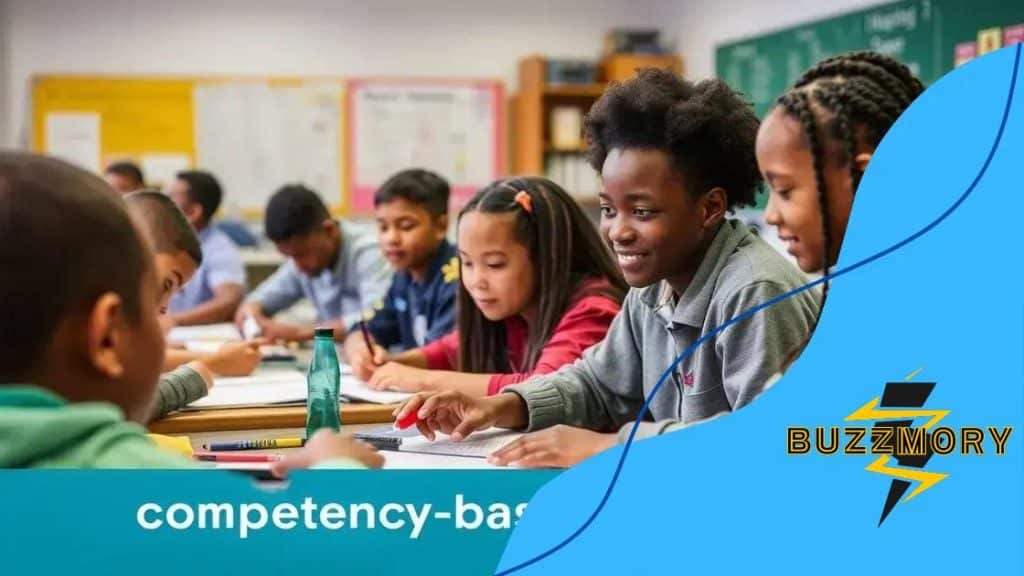The shift towards competency-based education systems

The shift towards competency-based education systems emphasizes personalized learning and skill mastery, allowing students to progress at their own pace and better preparing them for real-world applications.
The shift towards competency-based education systems is reshaping how we perceive learning and achievement. Have you ever wondered how education could evolve to better serve individual needs? This article dives into the nuances of this transformation.
Understanding competency-based education
Understanding competency-based education is essential for grasping how this approach redefines learning outcomes. In a traditional education system, students often progress through a fixed curriculum, regardless of their individual skills or understanding. In contrast, competency-based education focuses on a more personalized learning journey. It emphasizes the importance of demonstrating specific skills and knowledge before moving on to more advanced topics.
This method encourages students to take charge of their learning, allowing them to advance at their own pace. By mastering individual competencies, students can truly grasp the material, leading to better retention and application in real-world situations.
Key features of competency-based education
There are several defining characteristics of competency-based education that make it stand out:
- Personalized learning paths that cater to students’ needs.
- Assessment based on mastery, rather than time spent in class.
- Flexibility in learning environments, including online and blended options.
- Emphasis on real-world applications of skills learned.
For many, this shift away from traditional methods can feel daunting. However, understanding the aspects can help ease the transition. Instead of a one-size-fits-all model, students receive tailored support. This allows them to explore topics in-depth, ensuring they truly understand before they advance.
In this framework, teachers become facilitators who guide students on their journey. They provide resources and feedback to help students refine their skills. This collaborative environment encourages open communication, making learning a more engaging process. As students gain confidence in their abilities, they often become more motivated and invested in their education.
Overall, competency-based education promotes deeper understanding and skills acquisition. By focusing on what students can do rather than just what they have been taught, this approach prepares learners for success in both their academic and professional lives.
Key benefits of competency-based systems
Key benefits of competency-based systems highlight why this educational approach is gaining traction globally. One major advantage is the opportunity for customized learning. Students can progress as they master each skill, leading to a more personalized experience. This ensures that learners are not just moving through content but truly understanding it.
Another significant benefit is the focus on meaningful assessments. In traditional settings, students are often judged on their ability to recall information. Competency-based education shifts this paradigm to assess students based on their practical skills and knowledge application. This method allows educators to identify gaps in understanding and provide targeted support.
Advantages of competency-based education
Several advantages showcase the effectiveness of competency-based systems, including:
- Flexibility in learning: Students can learn at their own pace, which accommodates diverse learning styles.
- Increased student engagement: Tailored learning paths keep students interested and motivated.
- Better retention: Mastery of skills leads to deeper understanding, making it easier to remember information long-term.
- Real-world readiness: Skills learned are directly applicable to job opportunities, preparing students for the workforce.
Additionally, this educational model fosters better teacher-student collaboration. Educators can work closely with students, providing feedback and encouragement as they progress. This relationship not only enhances learning but also builds confidence in students. As they take more ownership of their education, students become more proactive and self-directed.
With a strong focus on skill mastery, competency-based systems prepare students not just for exams but for life beyond the classroom. This approach cultivates critical thinking and practical application of knowledge, which are essential for success in any career.
Challenges in implementing competency-based education

Challenges in implementing competency-based education can be significant, even though the benefits are clear. One primary obstacle is the need for systemic change. Traditional educational systems are deeply rooted in outdated practices. Shifting to a competency-based model requires time, effort, and a willingness to adapt.
Moreover, educators often face challenges related to training and professional development. Many teachers have been trained in traditional methods and may not feel equipped to implement new strategies. Ongoing training is crucial to help them understand how to assess student competencies effectively.
Common obstacles to adoption
Several common obstacles can arise, including:
- Resource limitations: Schools may not have the necessary resources, including technology or curriculum materials, to support competency-based learning.
- Resistance to change: Stakeholders, including parents and administrators, might be hesitant to embrace new teaching methods.
- Difficulty in assessment: Creating reliable assessments that accurately measure student competencies can be challenging.
- Standardization issues: Aligning competency-based education with state standards poses uncertainties for many educators.
Additionally, implementing a competency-based approach demands collaboration among various stakeholders. Schools and districts must work together to share best practices and resources. This collaboration fosters a supportive network that can help overcome hurdles.
Communication with students and families is also vital as they transition to this new model. Keeping everyone informed can ease fears and promote understanding. When parents are involved and aware of how this approach benefits their children, it creates a supportive learning environment.
Ultimately, while competency-based education offers numerous advantages, addressing these challenges is essential for successful implementation. Those involved must recognize and navigate these obstacles to create a thriving educational experience for all students.
Comparative analysis with traditional education models
Comparative analysis with traditional education models reveals significant differences that highlight the advantages of competency-based education. Unlike traditional systems that often adhere to a one-size-fits-all approach, competency-based education allows students to learn at their own pace. In a traditional model, students progress through grades primarily based on age and seat time, regardless of their actual understanding of the material.
Conversely, in a competency-based system, learners must demonstrate mastery of a skill before moving forward. This results in a more personalized and effective learning experience. Students can focus on areas where they need improvement while advancing quickly in areas they already understand.
Key differences between the models
When comparing these two educational approaches, consider the following differences:
- Learning pace: Traditional education often moves students along a fixed schedule, while competency-based education allows for flexibility based on individual mastery.
- Assessment methods: In traditional models, assessments may be standardized tests, while competency-based education frequently uses performance-based assessments that reflect real-world applications.
- Teacher roles: Teachers in traditional settings often serve as lecturers, whereas in competency-based systems, they act as facilitators and mentors, guiding students through their learning journeys.
- Focus on outcomes: Traditional education typically emphasizes grades that may not accurately reflect comprehension, while competency-based education prioritizes skill mastery.
This analysis showcases how a competency-based approach aligns better with the needs of modern learners. As the workforce evolves, skills such as critical thinking and problem-solving are increasingly essential. Traditional education’s reliance on rote memorization and standardization may not adequately prepare students for these requirements.
Moreover, competency-based systems foster greater student engagement. When learners are in control of their education, they are more likely to take an active role in their academic journey. This model cultivates a love for learning and encourages lifelong skill development.
Overall, understanding the distinctions between competency-based education and traditional models emphasizes the need for innovation in our educational systems, ensuring students are better prepared for future challenges.
Future trends in competency-based learning
Future trends in competency-based learning are shaping the landscape of education as it continues to evolve. As we move forward, several key trends are emerging that promise to enhance student engagement and learning outcomes. One significant trend is the increasing use of technology to facilitate personalized learning experiences. With the rise of adaptive learning software, students can receive immediate feedback and tailored instruction that meets their unique needs.
Another trend is the integration of skills-based assessments into the curriculum. Traditional grades may not accurately represent a student’s knowledge or skills. Instead, schools will focus on assessing competencies through real-world tasks, projects, and performances. This method not only measures understanding but also prepares students for future challenges.
Key developments in competency-based education
As competency-based education continues to grow, several important developments are expected:
- Increased collaboration: Schools will collaborate more with industries to ensure that the skills taught align with workforce needs.
- Focus on lifelong learning: Competency-based education will promote ongoing learning throughout life, encouraging students to continuously develop new skills.
- Data-driven decisions: Educators will utilize data analytics to monitor student progress and tailor learning experiences accordingly.
- Global learning opportunities: Online platforms will make competency-based education accessible to students worldwide, creating a diverse learning environment.
Moreover, the shift toward a competency-based framework will demand a focus on social and emotional learning. Understanding how to collaborate, communicate, and manage emotions in team settings becomes essential as students prepare for the interconnected job market. Recognizing this need, educational institutions will incorporate these elements into the competency model.
Overall, as we look to the future, competency-based learning aims to create a more effective and engaging educational experience. By focusing on skills mastery and personalized learning, students will be better equipped to succeed in an ever-changing world.
In conclusion, the shift towards competency-based education systems is transforming how we think about learning. By focusing on individual skills and mastery, students can engage more deeply with the material, making education more relevant and effective. This approach not only prepares students for the real world but also empowers them to take charge of their learning journey. As we embrace technology and innovative teaching methods, we pave the way for a future where every student can succeed. The importance of adaptability, collaboration, and continuous growth cannot be overstated as we look forward to shaping the classrooms of tomorrow.
FAQ – Frequently Asked Questions about Competency-Based Education
What is competency-based education?
Competency-based education focuses on students mastering specific skills and knowledge, allowing them to progress at their own pace.
How does competency-based education benefit students?
It personalizes learning experiences, enhances engagement, and ensures students are well-prepared for real-world applications.
What challenges might schools face when implementing this model?
Schools may encounter resistance to change, resource limitations, and the need for ongoing teacher training.
How can technology support competency-based education?
Technology can provide personalized learning tools, immediate feedback, and data analytics to track students’ progress and skills mastery.





